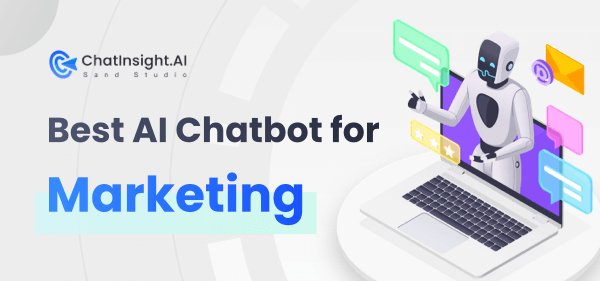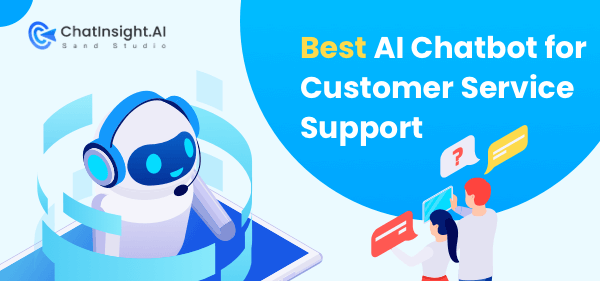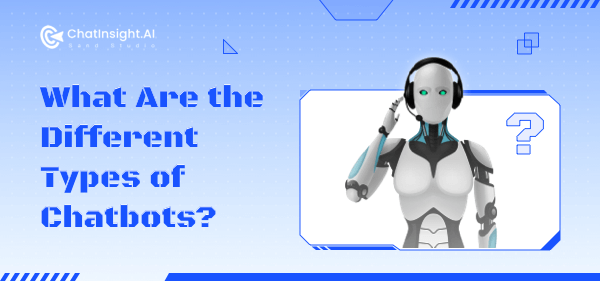How to Train an AI Chatbot?
When you think about it, using a chatbot is similar to taking care of a pet. You may think it is a weird statement. However, there is a commonality between the two elements. You will have to train AI chatbots like you train a pet. If you cannot train either, it causes numerous issues.
A chatbot that is not trained well causes issues throughout the sales funnel. It miseducates the customers regarding product use, which causes buyer’s remorse. Unfortunately, the customer will not shop from the brand again. There are no referrals or loyalty generated. Consequently, sales and revenue drop.
Before we begin, let us tell you the terms used in the discussion below are slightly technical. However, the aim is to educate with crucial definitions and secrets to training a chatbot. By the end of an article, you will sound like an AI expert. Are you ready?
1Types of AI chatbots
Rule-based vs machine learning-based
Rule-based chatbots use if-then rules to decide their next action. They apply a decision-making flowchart to do tasks as well. These chatbots have been around for decades and have contributed to chatbot growth significantly. Unfortunately, rule-based chatbots do not offer the best solutions because of the limited set of rules.
Machine learning chatbots make use of artificial intelligence to do their job. In addition, the chatbot will also study the data. As a result, the machine-learning chatbot makes engaging conversations. They are natural and follow a friendly tone. Machine learning chatbots automate tasks and improve user experience.
Knowledge-based chatbot
A knowledge-based chatbot is the ideal solution for offering quick answers to common queries. Businesses training AI chatbots with a knowledge base benefit from a vast data pool. Its algorithm will find the relevant information in its data set based on the intent. It studies the prompt and delivers a reliable answer in a few seconds.
You can embed ChatInsight into your website to quench customer curiosity. The chatbot has a wide knowledge base that can store product details. Furthermore, the chatbot will analyze customer’s interaction with the words and phrases they use. ChatInsight will manage accounts and billings as well.
2Basic Components of AI chatbots
- Natural Language Processing involves the chatbot to comprehend the human language as it is being written. Furthermore, NLP understands voice commands as well.
- Machine Learning algorithm learns the customer’s intent. It is not an easy task to separate hundreds of intents every day. However, you can train chatbots to do their job well.
- The node server processes the traffic requests from the customers and transfers them to the relevant human representative. The node server will also navigate the response.
- The Q&A systems will handle repetitive customer queries. It will automatically respond to the buyers. The answers and solutions are retrieved from the knowledge base.
3Before chatbot training: Terms you should know.
You must know of the terms involved in training a chatbot. There are some phrases that you will regularly interact with. In addition, the terms are helpful to beginners. You should know about them if you are new to AI chatbots. Here they are.
- An utterance is something the user says to a chatbot. They will post the question in many different ways. Therefore, the chatbot must have an extensive knowledge base.
- Secondly, the intent is why the user wishes to interact with the bot. It could also mean which results it wishes to retrieve. Are they using the chatbot for updated sports news? Other intents include learning about the brand or its products in detail.
- Thirdly, users will make use of an entity. These are words that make the intent very clear. An entity is a single word in a query that defines the timeline, niche, or interest. In short, entities are specifics that launch the chatbot.
- Chatbot training means inputting the information into the chatbot. As a result, it responds accordingly. Training will ensure the chatbot understands the context and intent of the question.
- A trigger is an embedded rule that forces the chatbot to take action.
- Furthermore, a condition is a scenario that the chatbot must fulfill for the trigger to take place.
- An action is an act that the chatbot does.
4Helpful tips for training an AI chatbot
1. Define the purpose and scope
The process of how to train chatbots begins by defining its intent, scope, and limitations. The client creates a wish list that talks about the chatbot's expectations. In addition, you can note the issues the business is facing, which chatbots will hopefully resolve. As a result, its scope benefits the business, sales, and the staff.
You also define the reasons for using the chatbot. For example, is the business using it to generate leads? Will it update the order status? Do you want the chatbot to generate leads? The chatbot will also offer product suggestions based on previous history and interaction.
2. Gather and prepare data
After you have labeled the chatbot’s use, it is now time to gather data. The step is very time-consuming and challenging because you want the chatbot to do well. The client can think of the data gathering from the customer’s perspective. You can label whether the data is a question or an answer. In addition, you can highlight the tags as well.
If the chatbot is not trained, it can mislabel intent. Consequently, the conversation is very confusing and off-outing the users. Therefore, the client is encouraged to separate the datasets. Moreover, they must input accurate responses to relevant scenarios.
3. Analyze your conversation history
The simplest way chatbots analyze engagement is with a live chat. You can use the feature for a few weeks to identify the recurring problems. As a result, you reach the core of conversational AI that benefits the brand. You can study the ongoing tasks, repetitive queries, and the posted FAQs.
The brand decides when they want to use the chatbot. In the next step, they can assess the performance through the dashboard. The client can download the conversation history. The chatbot will analyze the text to highlight frequency and intent. It is made possible with the Natural Language Processing model.
4. Generate variations of the user query
A customer will rephrase a question in many ways. Even though the intent is the same, the chatbot user will uniquely ask a similar question. Sometimes, even the simplest queries are rephrased in a complex sequence. The brand will witness the same occurrence when a potential buyer visits the website.
Therefore, when training AI chatbot, it must respond the right way. It must answer every question. The brand can think of the user intent to analyze the query friendliness. The strategy will determine the level of customer satisfaction as well.
5. Ensure the keywords match the intent
When you are training an AI chatbot, you must input all the queries that are surfacing in your mind. At the same time, you must also note the keywords that match the query. These phrases or words represent your business. You can extract these terms from the knowledge base. These keywords are the primary part of the inquiry.
You can use the NLP model to train chatbots so they identify the relevant terms. The client input words and questions. In addition, they can also add phrases that are relevant to the user. The more information you add, the better your chatbots operate.
6. Train your team
when entities train AI chatbots, it also includes training the team. In other words, the customer service staff must know about the training. This is because the business owner already has so much to supervise. Therefore, delegate the task of training a chatbot to the team. The staff is there to help you. Ask for suggestions, input, and query composition.
If left untrained, the staff will use the same responses to similar queries. The monotone answers demotivate customers to talk to the representative. Furthermore, similar-looking answers also imply that the chatbot is not trained properly. You can guide the team to input different queries, intents, and answers to keep the customers engaged.
7. Personalize the chatbot’s character
The most important component when you train AI chatbot is giving it a personality. It needs to look attractive and engaging. Furthermore, it must represent the brand as well. Therefore, the client must find the right tone. You can give the chatbot a name as well. You can use chatbots to engage with website visitors and translate them into customers.
The best way to find the right tone is how the human staff talks to the customers. The buyers appreciate lighthearted humor and witty replies. If a chatbot sounds robotic, the customers will disengage. You can add FAQs for the customers so they find the relevant data; meanwhile, the chatbot searches the knowledge base.
8. Incorporate multimedia and animated images
Did you know you can add multimedia elements to train AI chatbot? Yes, these elements will increase the engagement with website visitors. For example, you can insert GIFs, images, or videos. In addition, you can also add buttons, cards, and other elements to enhance the user experience. As a result, the customers return for more fun interactions.
When customers feel good about the website, the probability of shopping from the website increases manifolds. It gives you a competitive advantage in the market. The buyers will shop and talk about the brand with their families. It establishes a positive experience for everyone.
9. Continuously upgrade the chatbot
Training a chatbot involves updating it. Once the chatbot is embedded into the website, the client must study the analytics. You can perform closely how the data operates. As a result, you can make informed decisions that impact the functionality for the better. Sometimes than most, you need to train a chatbot more.
You will need to update a chatbot each time you input a new query or post a new intent. After you have updated the chatbot, connect it with the social media channels. You can make excellent use of messaging applications as well. It will enhance customer communication.
10. Update the knowledge base for your bot ChatInsight
A knowledge base is an excellent tool for answering queries in a chatbot. The feature will retrieve the answers from the knowledge base for accurate results. You can integrate the knowledge base with the help task for quick answers. As a result, the customers are satisfied. In addition, the efficiency impresses the investors.
You can train ChatInsight with industry-specific questions thanks to its extensive knowledge base. The tool is available 24/7, day and night, for its global customers. The chatbot uses the LLM model to deliver quick responses. You can customize the knowledge base according to the target demographic, such as age, location, and gender.
5Future of Trends in AI Chatbots
The use of chatbots continues to grow in sales and marketing. However, their use is also essential in content marketing, where numerous industries can take advantage of the algorithm. It will organize ideas, store data, and categorize customers. Another future AI trend is enhanced use in customer customers. The tracking update could be made more exact with a faster process for sales returns. Chatbot’s frequent use in many industries was worth $11 billion annually this year.
ChatInsight is a versatile question-and-answer chatbot that is designed to facilitate customers throughout the sales journey. The chatbot uses the LLM model to offer accurate results. Furthermore, ChatInsight also has an expansive knowledge base for the clients to industry-specific details.
- ChatInsight is codeless, which means training a chatbotis very easy. You do not need previous experience.
- You can embed ChatInsight as a URL, iframe, or on the website. Use it to greet the customers as a floating window.
- Furthermore, ChatInsight does not compromise on data security. It will store IP and password details expertly. The data is not shared with third parties.
Time to Wrap Up!
In short, the training of a chatbot involves inputting data which the bot turns into information for the customers. As a result, it responds to queries successfully. You can train a chatbot by typing different utterances. Don’t forget to check the keywords. Lastly, keep updating the chatbot.
Remember, training and learning chatbots need time and focus. Therefore, give yourself sufficient time to grow throughout the AI journey.







Leave a Reply.